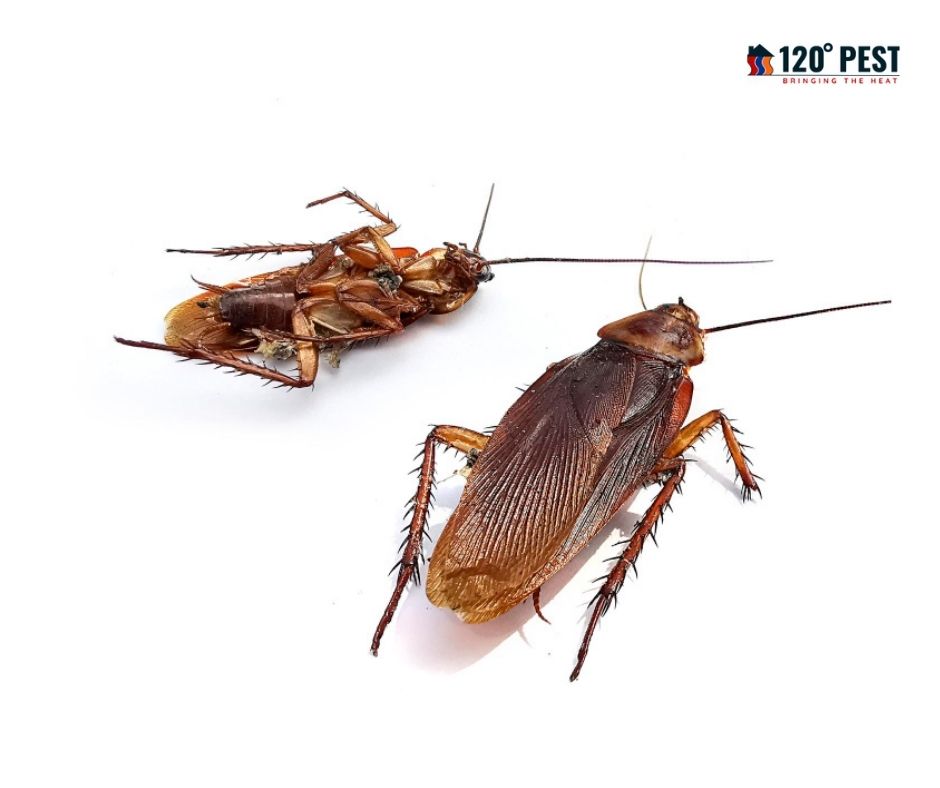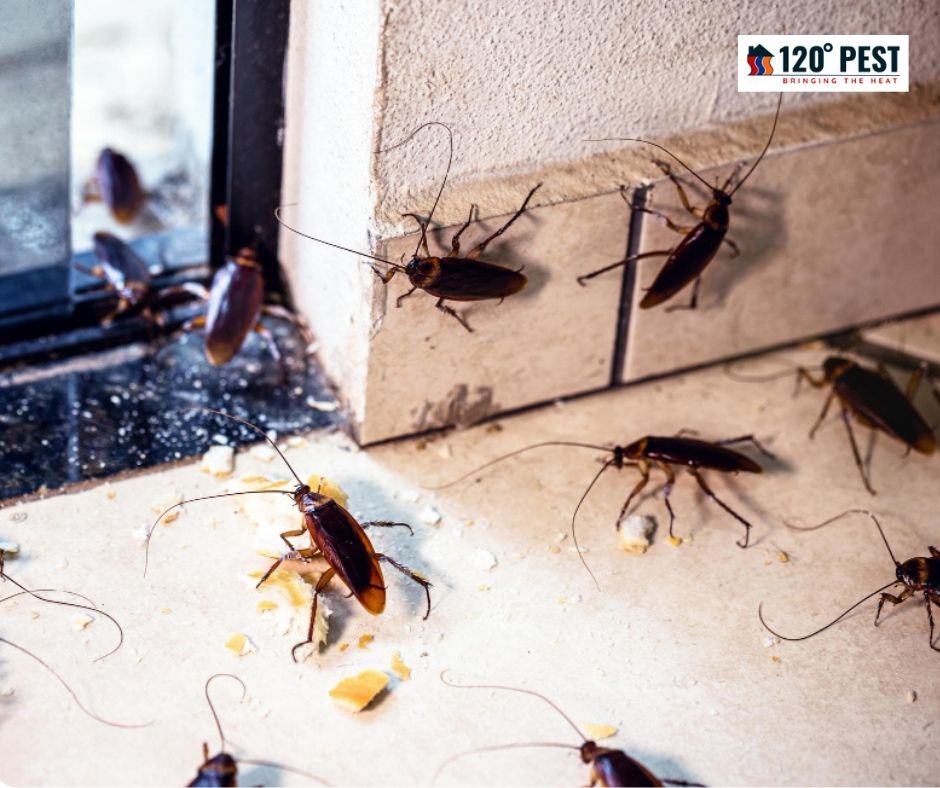Cockroaches, often regarded as pesky household pests, are more than just an annoyance. These resilient insects can pose serious health risks to humans due to their propensity to carry and spread various diseases. In this comprehensive guide, we delve into the intricate relationship between cockroaches and human health, exploring the diseases they can cause and the implications for public health.
Understanding Cockroach Infestations
Cockroach infestations are often associated with poor sanitation and hygiene practices. Factors such as food debris, moisture, and clutter provide ideal breeding grounds for these resilient insects. Common signs of an infestation include sightings of live cockroaches, fecal matter resembling black pepper, and a musty odor indicative of their presence.
Cockroaches and Disease Transmission
Cockroaches can act as vectors for various pathogens, facilitating the transmission of diseases to humans through direct contact or contamination of food and surfaces. Their indiscriminate feeding habits and ability to traverse unsanitary environments make them efficient carriers of bacteria, viruses, and parasites.
Health Risks Posed by Cockroaches
The health risks associated with cockroach infestations are diverse and encompass respiratory, gastrointestinal, and dermatological issues. Exposure to cockroach allergens can trigger asthma attacks and allergic reactions in susceptible individuals, while the ingestion of contaminated food can lead to food poisoning and gastrointestinal infections.
Specific Diseases Linked to Cockroaches
Among the diseases directly linked to cockroaches, salmonellosis, caused by the bacterium Salmonella, is a significant concern. Cockroaches can harbor Salmonella in their digestive tracts and deposit the pathogen onto surfaces and food items, leading to widespread contamination and illness. Additionally, cockroach allergens have been implicated in exacerbating asthma symptoms and contributing to the development of allergic diseases.
Cockroaches in Urban Environments
Urban environments present unique challenges in controlling cockroach populations due to factors such as high population density, inadequate sanitation infrastructure, and limited access to pest management resources. Cockroach infestations in densely populated areas can exacerbate public health risks and necessitate proactive intervention measures.
Impact of Cockroaches on Vulnerable Populations

Vulnerable populations, including children, the elderly, and individuals with pre-existing health conditions, are particularly susceptible to the adverse effects of cockroach infestations. Socioeconomic disparities and inadequate housing conditions further compound the health risks faced by marginalized communities, highlighting the need for targeted interventions and support services.
The Importance of Cockroach Control
Effective cockroach control strategies encompass integrated pest management (IPM) approaches that combine preventive measures, sanitation practices, and targeted pesticide application. By addressing underlying factors contributing to infestations and implementing sustainable pest control solutions, communities can mitigate health risks and improve overall quality of life.
Recognizing and Addressing Cockroach-Related Health Issues
Awareness of the signs and symptoms of cockroach-related health issues is crucial for prompt identification and intervention. Individuals experiencing respiratory symptoms, gastrointestinal discomfort, or allergic reactions should seek medical evaluation, while proactive measures to eliminate cockroach infestations can prevent further health complications.
Public Health Initiatives and Policies
Government agencies and public health organizations play pivotal roles in addressing cockroach-related health concerns through policy development, enforcement, and community outreach. Regulations governing pest control practices in residential and commercial settings aim to safeguard public health and promote environmental sustainability.
Future Directions in Cockroach Research
Advancements in pest management technologies and interdisciplinary research efforts hold promise for innovative approaches to cockroach control and disease prevention. From biopesticides to novel trapping methods, ongoing research endeavors seek to enhance efficacy and minimize environmental impact.
Global Perspectives on Cockroach-Related Health Concerns
Cockroach-related health risks vary across regions due to cultural, environmental, and socioeconomic factors. International collaborations and knowledge-sharing initiatives are instrumental in addressing global health disparities and fostering collective efforts to combat vector-borne diseases.
Overcoming Stigma and Misconceptions
Addressing stigma and misconceptions surrounding cockroach infestations is essential for promoting empathy, understanding, and effective pest management practices. Education campaigns emphasizing the importance of hygiene, sanitation, and community cooperation can dispel myths and empower individuals to take proactive measures.
Emerging Trends in Pest Management
In response to evolving pest control challenges, researchers and practitioners are exploring novel approaches to cockroach management. Integrated pest management (IPM) strategies, which emphasize sustainable, least-toxic methods, are gaining traction as alternatives to conventional pesticide applications. Additionally, advancements in biopesticides and eco-friendly interventions offer promising solutions for mitigating cockroach infestations while minimizing environmental harm.
Engaging Communities in Pest Prevention
Community-based initiatives play a crucial role in promoting awareness and fostering active participation in pest prevention efforts. Educational outreach programs targeting households, schools, and businesses provide valuable resources and guidance on effective sanitation practices, pest identification, and safe pest management techniques. By empowering individuals and communities to take ownership of their environments, these initiatives contribute to long-term resilience and health promotion.
Harnessing Technology for Pest Monitoring
The advent of digital technologies has revolutionized pest monitoring and surveillance, enabling real-time tracking of pest populations and environmental conditions. Smart traps equipped with sensors and wireless connectivity offer insights into cockroach activity patterns and facilitate timely intervention strategies. Furthermore, data analytics and predictive modeling tools empower stakeholders to anticipate pest outbreaks and proactively implement control measures, enhancing efficacy and resource allocation.
Integrating Cultural Perspectives in Pest Management
Cultural beliefs and practices influence perceptions of pests and shape attitudes toward pest management strategies. Recognizing the cultural context surrounding cockroach infestations is essential for developing culturally sensitive interventions that resonate with diverse communities. By engaging local stakeholders and incorporating traditional knowledge systems, pest management initiatives can promote inclusivity and foster collaborative approaches to health promotion.
Collaborative Partnerships for Sustainable Solutions
Addressing complex public health challenges requires collaboration across sectors and disciplines. Public-private partnerships, academic-industry collaborations, and cross-sectoral alliances bring together diverse expertise and resources to tackle cockroach-related health risks holistically. By leveraging the strengths of each stakeholder group, these partnerships drive innovation, facilitate knowledge exchange, and enhance the scalability and sustainability of pest management interventions.
Empowering Advocacy and Policy Action
Advocacy efforts aimed at raising awareness of cockroach-related health issues and promoting policy reform are essential for effecting systemic change. Grassroots advocacy campaigns, supported by evidence-based research and community testimonials, can mobilize public support and pressure policymakers to prioritize investments in pest control infrastructure and public health initiatives. By amplifying the voices of affected communities, advocacy organizations play a vital role in shaping policies that prioritize health equity and environmental justice.
Conclusion
In conclusion, the relationship between cockroaches and human health is multifaceted and requires a comprehensive, collaborative response. From bolstering pest management strategies to advocating for policy reforms, every stakeholder has a role to play in safeguarding public health and promoting resilient communities. By embracing innovation, fostering partnerships, and prioritizing equity, we can mitigate the health risks posed by cockroaches and create healthier environments for all.
Ready to take action against cockroach infestations? Contact 120 Pest Solutions today for expert assistance and tailored pest management solutions.
FAQs
What are the common signs of a cockroach infestation?
Common signs include sightings of live cockroaches, fecal matter resembling black pepper, and a musty odor indicative of their presence.
How do cockroaches contribute to the transmission of diseases?
Cockroaches can act as vectors for various pathogens, spreading diseases to humans through direct contact or contamination of food and surfaces.
What health risks are associated with cockroach infestations?
Cockroach infestations can pose risks such as respiratory issues, gastrointestinal problems, and allergic reactions due to exposure to cockroach allergens and contaminated food.
Which specific diseases are linked to cockroaches?
Salmonellosis, caused by Salmonella bacteria, is a significant concern as cockroaches can harbor the pathogen in their digestive tracts and contaminate surfaces and food items.
How do urban environments impact cockroach populations?
Urban environments present challenges in controlling cockroach populations due to factors like high population density and inadequate sanitation infrastructure.
Who are particularly vulnerable to the adverse effects of cockroach infestations?
Vulnerable populations including children, the elderly, and those with pre-existing health conditions are particularly susceptible to the adverse effects.
What are effective cockroach control strategies?
Effective strategies include integrated pest management (IPM) approaches combining preventive measures, sanitation practices, and targeted pesticide application.
What should individuals do if they suspect cockroach-related health issues?
Individuals experiencing symptoms such as respiratory issues or allergic reactions should seek medical evaluation, while proactive measures to eliminate infestations are advised.
How do public health initiatives address cockroach-related health concerns?
Government agencies and public health organizations develop policies, enforce regulations, and conduct community outreach to address cockroach-related health risks.
What are emerging trends in pest management for cockroaches?
Emerging trends include integrated pest management (IPM) strategies, advancements in biopesticides, and community-based initiatives.
How can communities be engaged in pest prevention efforts?
Community-based initiatives provide resources and guidance on effective sanitation practices, pest identification, and safe pest management techniques.
What role does technology play in pest monitoring?
Digital technologies enable real-time tracking of pest populations, data analytics, and predictive modeling, enhancing pest management efficacy.
Why is integrating cultural perspectives important in pest management?
Cultural beliefs influence attitudes toward pest management, and incorporating local knowledge systems promotes inclusivity and collaboration.
How do collaborative partnerships contribute to sustainable solutions?
Collaborative partnerships leverage diverse expertise and resources to tackle cockroach-related health risks holistically, driving innovation and scalability.
How can advocacy efforts impact policy reform in pest control?
Grassroots advocacy campaigns raise awareness and mobilize public support for policy reform, prioritizing investments in pest control infrastruct




